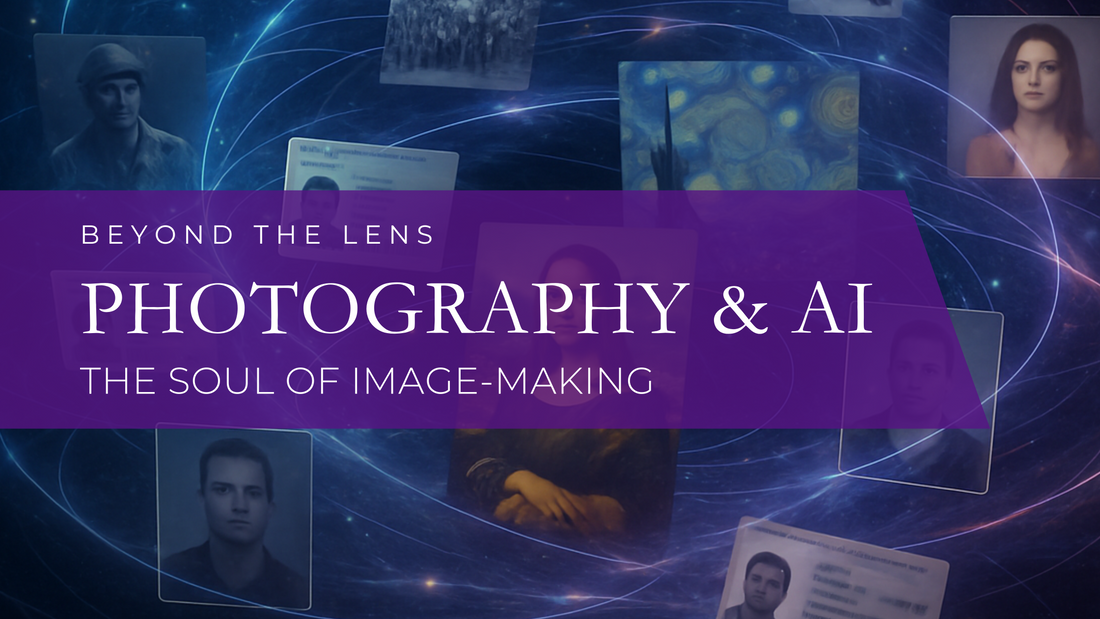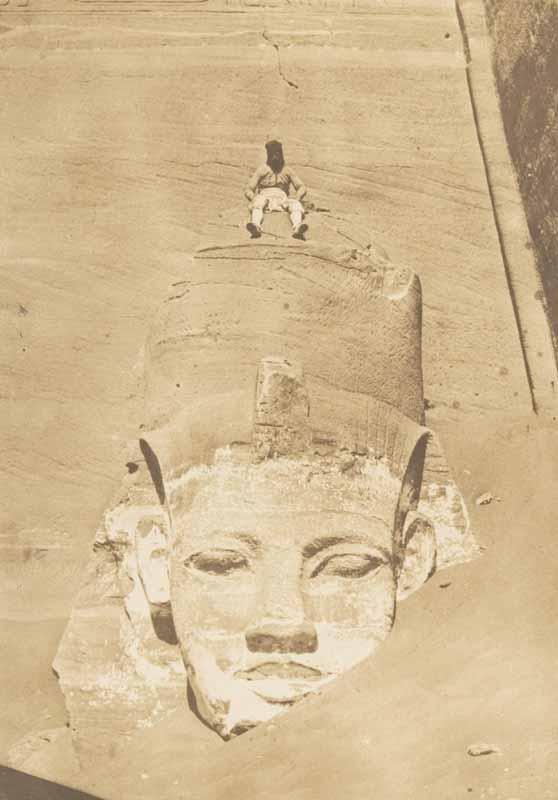
Beyond the Lens: Photography, AI, and the Soul of Image-Making
Share
Photography has always been a conversation between reality and imagination. Once dismissed as a tool for documentation, photography has become one of the most diverse and expressive mediums in contemporary art. Today’s photographers are not just capturing moments—they’re sculpting them. Whether through dramatic Florida landscapes, surreal long exposures, minuscule water droplets, or layered mixed-media compositions, photography continues to stretch what’s possible with light and image.

Photo of Maxime du Camp on ancient Egyptian statue by Gustave Flaubert, who he traveled across the Middle East with to record the Pyramids and other wonders by Photograph for the first time so others could see the real deal and not a drawing of such.
This evolution raises timely questions: What makes a photograph art? Where does authorship live when tools become more powerful? How much does the tool matter compared to the person using it? As artificial intelligence enters the creative sphere, these questions are louder than ever. Like early photography, AI is often met with skepticism. But it also challenges us to rethink what defines an artist’s voice. Just as cameras once liberated artists from a paint rush, new technologies are liberating ideas from the constraints of time, skill, and relying on one's individual perspective.

Visualization of the Collective Conscious AI accesses - Generated by OpenAi
At its best, AI taps into something vast: a digital collective consciousness of human-made images, styles, and cultural memories. Yet this material remains "floating around" until a person—an artist—shapes it with intention. The artistry is never in the tool alone. It lives in what the artist chooses to depict, how they choose to depict it, and most importantly, why they are moved to create it. Technology offers infinite possibilities, but it is still the artist who selects, shapes, and breathes life into those possibilities.

A simple way to think about it is through three layers: the what, the how, and the why. Two photographers might both photograph the same coastline (what), and even print it in bold, vivid color (how). But the heart of the piece—the why—comes from each artist’s personal story, memories, and vision. It’s that human spark that gives a work its meaning.


Photograph of Sunset by Christophe Hanckowiak. Photograph of Sunset by Jonny Nomad.
Today, many artists no longer treat photographs as endpoints—but as building blocks. A single image becomes part of a visual sentence, part of a larger, layered story. Photography is no longer just about capturing a moment. It’s about composing one. And in a world saturated with images, the value lies not just in what we see—but in how it's been seen, and why it was made in the first place.

Photograph by Deborah Berry of multiple water droplets colliding.
In our upcoming photography exhibition at Gallery500, The Edit, this balance of craft and concept takes center stage. Every piece has been carefully selected to highlight not just skill, but clarity of vision—the artist’s ability to cut through distraction and focus on what matters most. From hand-printed archival works to cutting-edge digital experimentation, each piece reflects a distinct point of view. Photography lives right where the real and the imagined meet—and it’s most powerful when the artist uses every tool available to share how they see the world.

Composite Photograph by Natasha Fenga of a New York Fashion Week model, a winter tree, and a space photograph from NASA's archives.
View The Edit Friday May 9th through Sunday June 29th at Gallery500. Join us Friday May 9th from 5 - 7 pm at Gallery500 for the opening reception to meet the artists and discuss the what, the how and the why.

